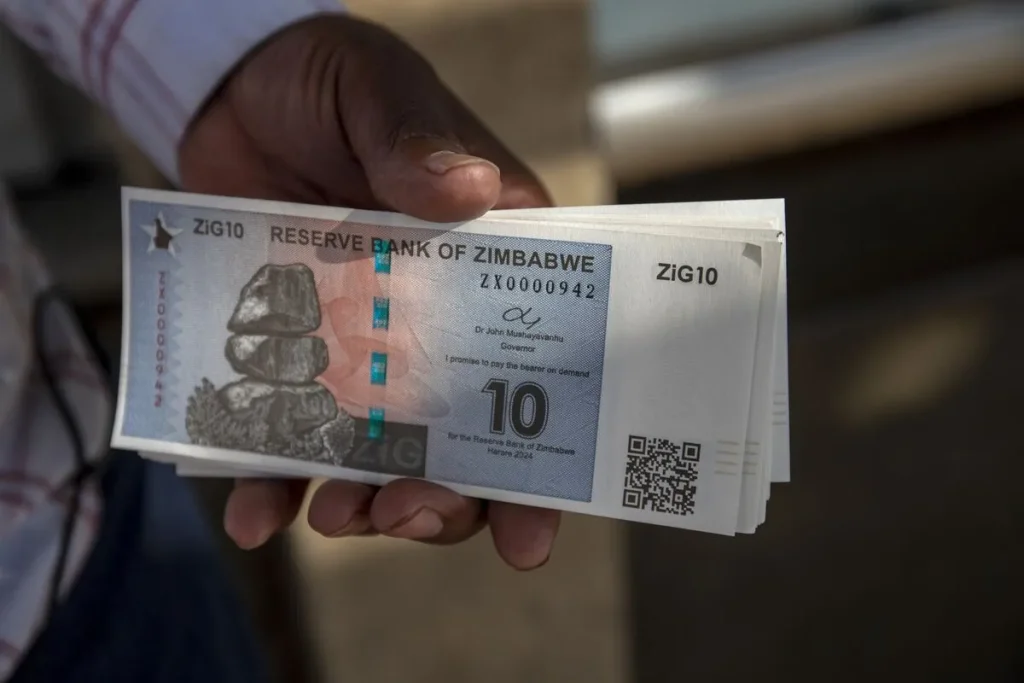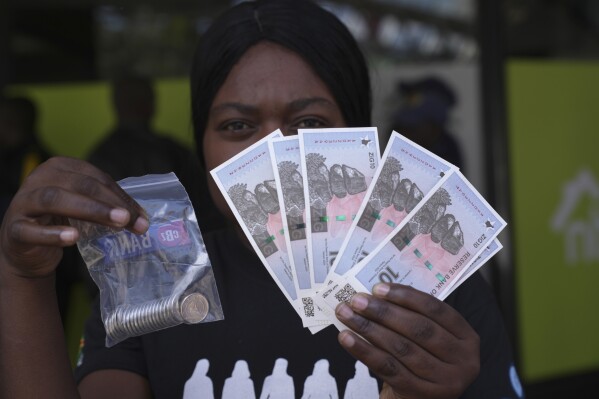Zimbabwe’s central bank has reaffirmed its commitment to a tight monetary policy stance in 2025, aiming to stabilise its currency, which has depreciated by 48% since its introduction nine months ago.
Governor John Mushayavanhu stated that high interest rates will also help curb inflation, with month-on-month consumer-price increases slowing significantly from 37.2% in October to 3.7% in December. “The forthcoming 2025 Monetary Policy Statement will further contextualize and consolidate these positive prospects, and proffer more fine-tuning policies to move the economy from stability to growth,” Mushayavanhu explained in a written response to questions.
Despite five failed attempts to establish a functional currency, Zimbabwe’s latest initiative — the gold-backed ZiG — faces challenges similar to its predecessors. Most residents prefer the U.S. dollar as a reliable store of value, with approximately 90% of transactions conducted in the greenback.

To stabilise the currency, the Reserve Bank of Zimbabwe has raised its key interest rate to 35%, aiming to reduce inflation and bolster the ZiG’s value. At the same time, Zimbabwe’s Treasury projects a 6% economic expansion this year, driven by recoveries in the agricultural sector and growth in the iron and steel industries.
Targeted Finance Facility and Currency Strategies
In late 2024, the central bank introduced the Targeted Finance Facility (TFF), a special-purpose vehicle to finance productive sectors and stimulate economic growth. The facility is funded by banks’ statutory reserves, avoiding the creation of new money that could fuel inflation.
According to Mushayavanhu, the central bank is also working on policies to increase the usage of the ZiG in both physical and electronic forms, providing greater flexibility and convenience for the public. Currently, electronic transactions through the Real-Time Gross Settlement system are dominated by the ZiG, accounting for about 40% of such activities.
The TFF serves not only as a liquidity management tool but also as a catalyst for increased bank lending to productive sectors, contributing to economic growth and stability.
Challenges and Future Outlook
Years of economic mismanagement continue to cast a shadow on Zimbabwe’s efforts to sustain a viable currency. While the ZiG was launched as a gold-backed initiative to restore confidence, the U.S. dollar remains dominant in daily transactions.
Governor Mushayavanhu emphasised the central bank’s focus on consolidating recent gains in inflation control and currency management, signaling optimism for economic recovery. The forthcoming monetary policy statement is expected to outline further measures to strengthen the economy, aiming to transition from stability to sustainable growth.


